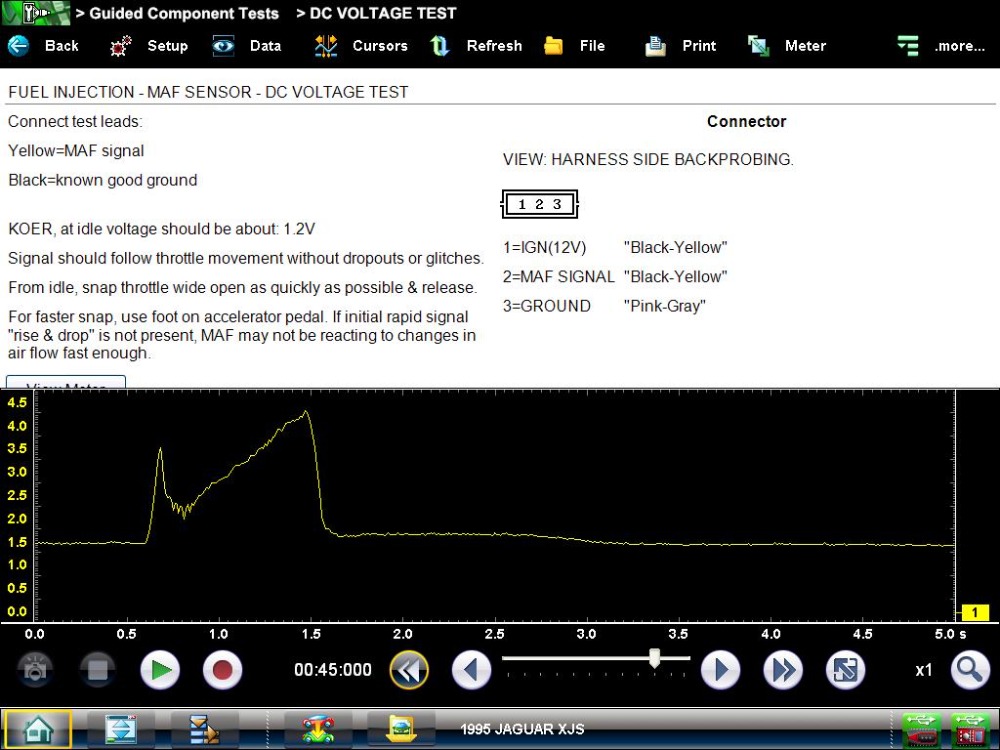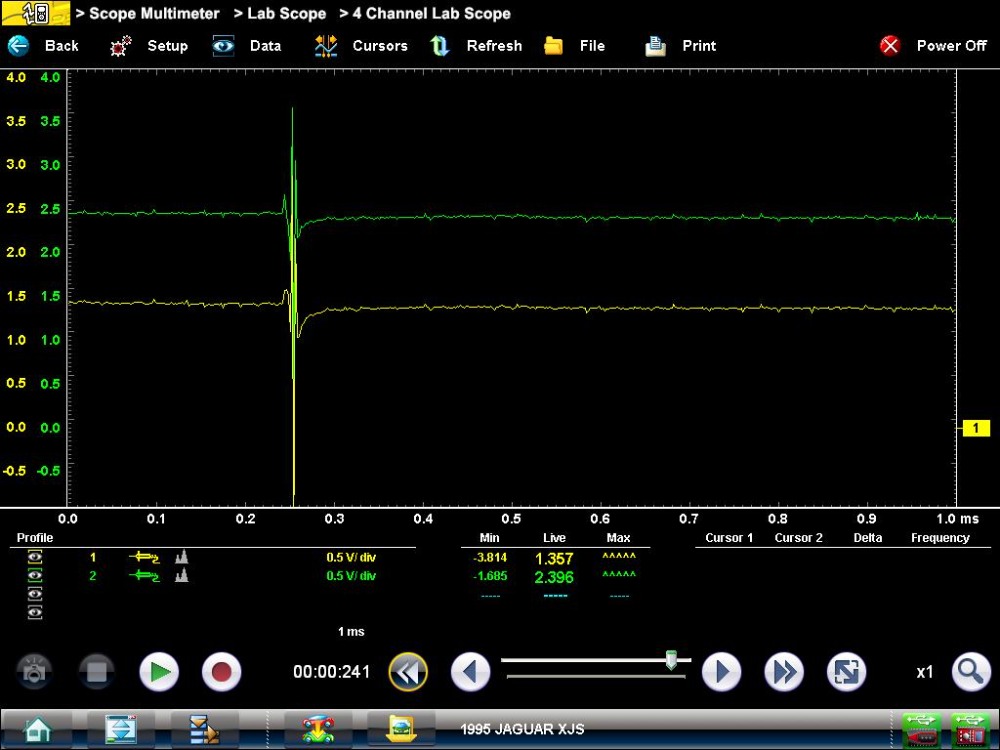Smeter12 wrote: - does the "lapscope" feature on the Verus have a higher resolution and sampling rate then the "Graphing Multimeter > Volts DC" meter on the Verus?
It does indeed have a higher resolution and sampling rate, and that's the double-edged nature of scope testing.

:lol:
It's my opinion that the glitch in your second picture is ignition noise. There's a TON of it in a running engine bay, and the scope test leads will readily pick it up. It's always there.
Your lab scope captures picked it up because of your scope settings - 1ms time base, .5v/div with Peak Detect enabled. No offense meant here, but at those settings, you'll see your neighbors dog farting. :silly: The 'glitch' is there, but it doesn't impact the performance of the MAF.
Million answer would be?
a) Glitch never happened when scoping in "guided component testing" and did when in "lapscope'
I guess this depends on how you look at it? Literally. :lol: The glitch was always there, it just depended on your scope settings. That's the problem with scopes - it's easy to go down a rabbit hole.
b) "lapscope" is always a better choice when trying to find a voltage/glitch issue because it has a higher sampling rate.[/quote]
This is also subjective, IMO. In general, I'll say that the Lab Scope option is better when you know what you're looking for.



